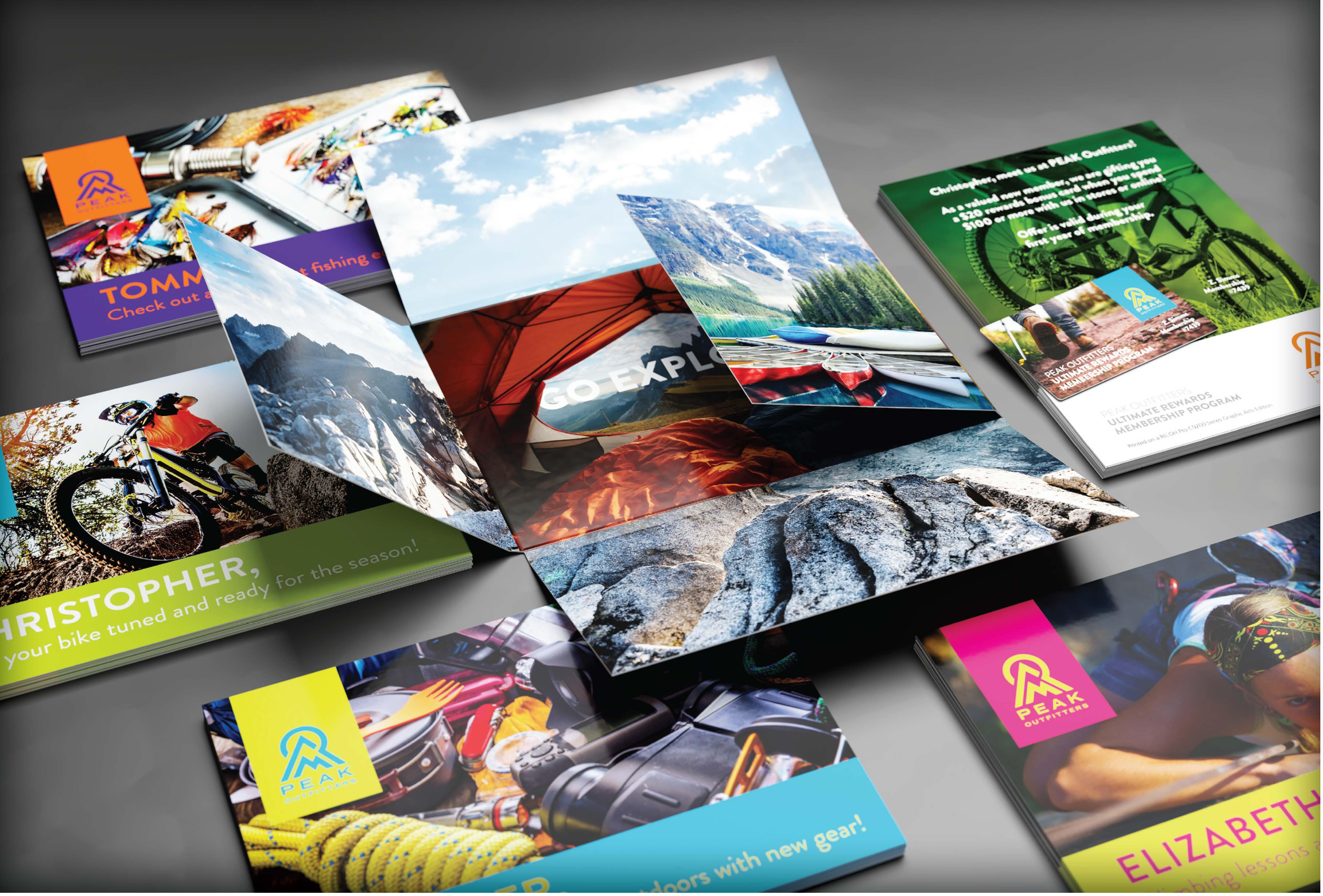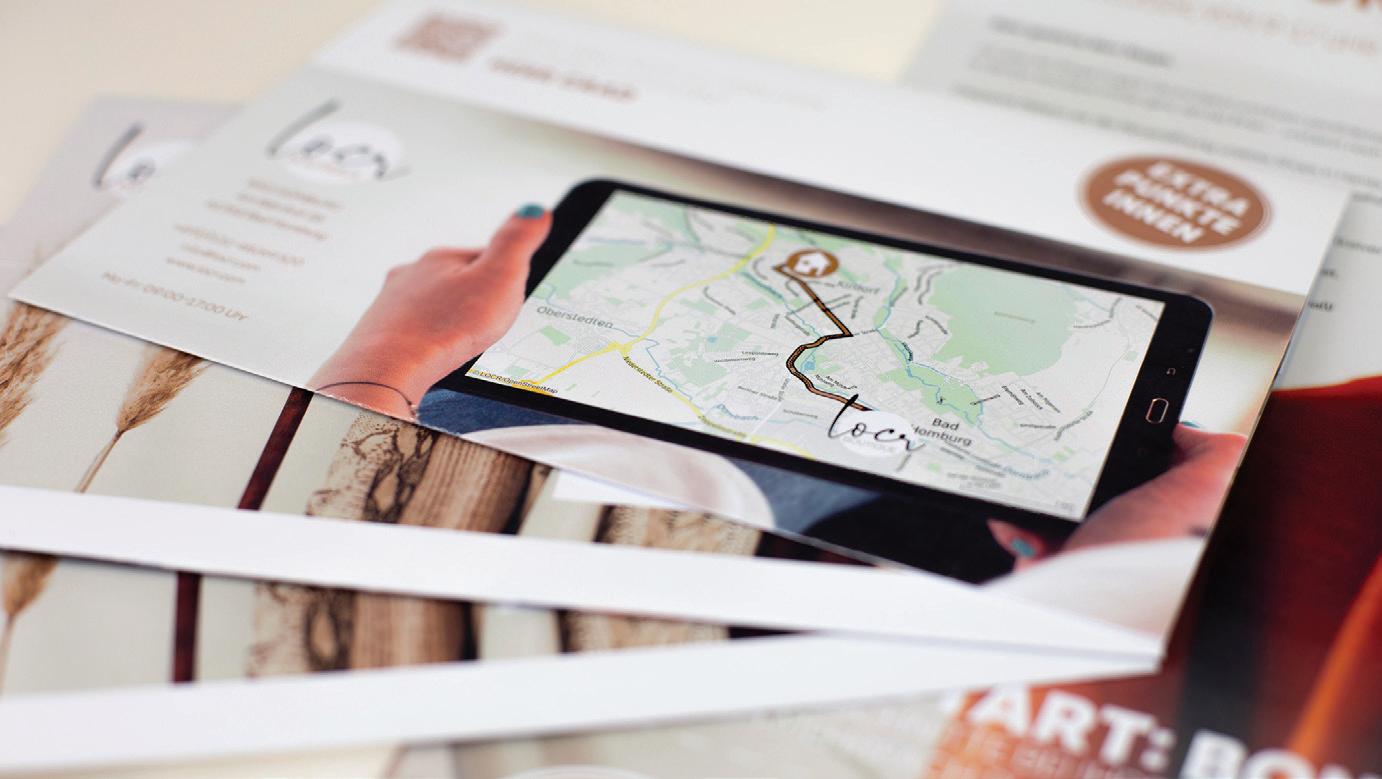
9 minute read
EYEBALLS TrendsPushPhysicalandVirtualCollaboration
byCassandra Balentine
Direct mail continues to evolve. While challenges like postage increases are real, the impact of that physical connection is uncontested. "One of the biggest advantages of direct mail is its ability to create a physical connection with the recipient. People tend to give higher value to tangible items they can touch and feel," offers Clint Seckman, president, Parkland Direct.
Above:Advancementsin variable printon demand forpictures andgraphicsinadditiontootherembellishmentscandrive greater response rates and readability. Ricoh production printing equipment offers capabilities forhighlypersonalized,high-valuemail.


Physical direct mail reacts to the digitalfatigueandimpersonal,unwantedmail byprovidingrelevant, interesting content. "It provides abreak fromthe screen readersdefinitely enjoy. Directmailmakesuse of the benefits of printed products-you can touch it, hold it, bring it inside your home, and keep it for later. Emails often get deleted right away or moved to spam folders," asserts ThomasSchnettler, business development, andRandyHardy, representative, North America, locr GmbH.
"In today's digital age, people spend more time in front of screens, leading to an increase in screen fatigue. As a result, there is a growing opportunity for direct mail providers to capitalize on the desire formoretangibleandhumanconnections through print and direct mail marketing," addsSeckman.
Troy Shatus, president/CEO, Capital Mailing Equipment, notesthat in theage of digital marketing, direct mail providers have a unique opportunity to reach customersthrough physical mail. "While digital channels are often saturated with ads and promotions, physical mail has the potential to stand out and make a lasting impression on the recipient."
Direct mail brings less competition for eyeballs. "Digital is crowded now; everyone is there in almost every aspect of digital. You still have to be there, but I've always believed in being in places that aren't as crowded or competitive. Direct mail is that channel now," says Brad Kugler, CEO, DirectMail 2.0.
Marc Mascara, manager, professional services, Canon Solutions America, Production Print Solutions, says high-value print applications that drive personalized and relevant communications represent a big opportunity for printandmailproviders. "Research tells us that generational differences have once again swung the pendulum back towards print communications. With the overwhelming number of ecommunications being received we believe the younger generation has become more attuned to personalized and relevant print communications. Research shows not only their increased adoption of print but more brand awareness and purchasing prompted by printed direct mail they receive."

Julie Brannen, director of regional sales and sustainability solutions, Monadnock Paper Mills, agrees, adding that highly curated and targeted direct mail has proved very successful over the past few years. "Younger generations love to get real mail in their real mailbox. Direct mail should be an integral part of any omni-channel marketing strategy."
"We are seeing higher than ever response rates to the direct mail marketing channel and statistics are showing direct mail earning the highest return on investment (ROI) of other channels," shares Morgan DiGiorgio, SVP, sales and marketing, DirectMail 2.0.
Digital Integration
Digitalcommunicationsalso have advantages, especially when paired with print. Therefore, to increase ROI, Angelo Anagnostopolous, VP of postal, GrayHair Software, points to the importance of connecting the "physical to digital;' which helpstoremaintopofmind.
"By combining direct mail with digital marketing efforts, businesses create a more cohesive and omni-channel marketing strategy that reaches customers across multiple touch points to lift direct mail response rates," says DiGiorgio.
Consumers want this type of connection, and respond well to it. "This requires traditional mail providers to step through the digital front door to multiple distribution channels to improve the customer experience and performance," shares Kenneth Tucker, senior manager, marketing business development, Ricoh USA Inc.
Plenty of innovative options combine direct mail and cross media communications to serve the increasing customer desire for personalized, interesting approaches, addSchnettlerand Hardy.
Emerging technologies like augmented reality (AR) and quick response (QR) codes create interactive and engaging mail.
"Incorporating QR codes or AR technology into mailings can provide a more immersive experience for recipients and encourage them to engage with the mailing further. Adding a call-to-attention tag line with full-color personalization and graphics will also increase your engagement and open rates," adds Shatus.
Data and Personalization
In addition to multichannel delivery, personalized direct mail provides efficient, reliable, and sustainable solutions in times of inflation and uncertain economic situations, share Schnettler and Hardy.
Personalization and the use of data analytics is a big opportunity for direct mail providers today and into the future. “By leveraging data such as purchase history, demographics, and behavioral patterns, direct mail providers create highly personalized mailings that are more likely to resonate with recipients and drive action,” shares Shatus.
With the abundance of data available, direct mail providers are able to create highly personalized and targeted mail pieces that resonate with individual recipients. “An up-and-coming strategy to harness this is the use of technology to identify website visitors and retarget them with direct mail personalized to their web activity,” adds DiGiorgio.
“The biggest opportunity for direct mail providers today and in the future is to leverage data, technology, and creative approaches to create personalized, engaging, and memorable mailings that cut through the noise and connect with customers on a deeper level,” shares Shatus.
Effective Effects
Another way to create stickiness with direct mail is leveraging the latest options in media and embellishment.
Direct mail providers can explore new formats and materials to make mailings more visually appealing and memorable. “For example, using high-quality paper, unique textures, or scents can help mailings create a lasting impression on the recipient, comments Shatus.
“Direct mail has a real penchant for innovation and experimentation. It’s a creative discipline. Textures, colors, metallic, even scratch-and-sniff effects help mailers stand out in the mailbox. They also need to show a positive impact on the response rate to justify the cost, so the most effective tools will win out in true Darwinian fashion. Today and in the future, I see a lot more in the way of digital textures and foils being prudently used,” comments William Longua, senior director, digital print group, Quadient.
Seckman says studies have shown that haptics, or the science of touch, is an effective way to engage customers and increase the perceived value of a product or service. “Adding embellishments to direct mail pieces, such as embossing, foil stamping, or unique textures, builds on this idea and helps to increase brand recognition and trust. The adoption of embellishments in direct mail marketing is on the rise as organizations look for innovative ways to stand out and make a lasting impression on their customers.”
Coatings were initially viewed as protective materials from scuffing or handling in the mailing process, but now, Lance Martin, VP, marketing, MBO America & Komori America, feels that they are much more widely used in the direct mail business for tactile feel changes and visual stimulation to achieve conversion. “This new approach has moved the use of coating to a value-added enhancement.”
Mascara says many print and finishing tools are geared towards increased automation and fewer manual touchpoints to help reduce labor requirements. He points to a recent mail piece Canon created in partnership with MBO, a trifold, sealed mailer with two perfs and a glued business card. The entire piece was finished automatically—scoring, perfing, folding, sealing, and gluing down the card.
2. Locr provides personalized maps that can be found in direct mail and cross media campaigns of all industries. These maps attract attention, visualize the way from the customer to business locations, and are proven to boost response rates.


Anagnostopolous points to trailing edge die-cut envelopes, embossed envelopes, and special coatings as popular enhancements for direct mail today.
Tip-ons are another consideration. Martin suggests thinking of tip-ons as an additional form of embellishment making the deliverable more engaging. He says they traditionally have a couple of positions in the market. “One can be for function as in the case of providing new ID cards for a group policy plan. Control systems have the ability to apply the card and the information matched to the personalized mail.
The other can be to engage the recipient for better conversion. The tip-on can be a number of things as simple as a CR80 style card, or as complicated as a seed packet or product sample. The key to this is to provide systems that can be configured to provide this finishing technique in a single step.”
David Yost, GM, InfoSeal, says windows are growing in popularity and find success because of their strong response rates. “Having the ability to utilize patched on polyester windows in rolls, having multiple free-floating inserts—without requiring an inserter—has changed the production dynamics for mailers.”
Postage Increases
The elephant in the room is continued rising postage by the United States Postal Service (USPS). Print providers and mailers work with clients to optimize mailings by improving data quality, reducing waste, and increasing response rates.
“Most of our customers spend a lot of time forecasting and then factoring in the postage increases,” adds Margaret Curry, national manager, major accounts and strategic alliances, RISO, Inc. “We discuss paper and postage all the time. The amount of time and resources they commit to understanding what the USPS is planning or executing is significant.”
Anagnostopolous points out that the USPS’ twice-per-year postage increases are resulting in ten percent plus declines in mail volumes. “Even though mail has a better ROI, it becomes too expensive at some point. The trick to mitigation, and something we have been helping customers with, is how to mail less and maintain the same response rates.”
“While postage rates are a problem, the biggest problem lies in the integration and control of postal streams through a standardized process. That includes all address cleansing, co-mingling, presort, and design optimization. This process can minimize the increasing postage cost while improving the customer experience, security, compliance, and results," says Tucker.
"The onus is on the mailer to make sure the lists they are using are as clean, accurate, current, and targeted as possible to optimize efficient use of that postage," cautions Longua.
Print providers might explore alternative delivery options such as drop-shipping or co-mailing to achieve cost savings by bypassing some of the more expensive segments of the postal distribution chain.
Seckman points to USPS incentives that offer discounts for things like tactile sensoryandinteractive, emerging andadvanced technology, and informed delivery discounts-among others. "It is important for organizations using direct mail to work with their providers to take full advantage of these valuable incentives as it can help offset increasing postage rates!'
Providers can also get creative with how the mail is presented. "To reduce postage costs, we have seen tremendous growth of our Double Postcard Pressure Seal products," says Yost. He explains that marketing mailers often utilize Double Postcards because it conceals the message while utilizing a small amount of paper, and is efficient to process from a twoup, high-speed rollstraightto the mail tray.
"While postage increases are certainly a challenge for print providers, it is not necessarily the biggest challenge they face. Other challenges may include increased competition from digital channels, evolving customer demands for personalized and targeted communications, and the need to constantly adapt to new technologies and industry trends," comments Shatus.
Kugler feels that direct mail is becoming an exclusive luxury or the high end of marketing, much like TV is thought of today. "If you have a more valuable or pricey product, the cost is still low compared to the revenue generated. The postage price increases can be absorbed in the right markets and with the right messaging."
Schnettler and Hardy suggest trying to make the most of your resources, spend wisely, and plan ahead. "Direct mail offers several options to track your results regularly. Research and evaluate the efficiency of digital content-saving on paper and postage costs won't necessarily lead to successful and cost-efficient campaigns."
DiGiorgio also sees a desire for sophisticated tracking and the ability to show attribution increases as customers want to ensure the additional spend is yielding the results they desire. "Print providers will need to be more focused on ROI reports and showing attribution to ensure customers don't seek other channels;' offers DiGiorgio.
"Planning ahead, being more strategic, utilizing all the tools available to razor focus your message, and good lists all will make each campaign more profitable. Many printers are becoming direct mail experts and they can help guide brands and marketers through the process," says Brannen.
Modern Mail
Direct mail is an essential part of communications. However, it's evolving and continually challenged by increasing costs and slashed budgets. There are several ways to improve efficiency in production, as well as incentives for lower costs in postage.
"The biggest opportunity for direct mail providers today and into the future is to lean into the human connection that print and direct mail marketing can provide. As more people suffer from screen fatigue, the value of physical marketing materials will only increase. By combining the tangible nature of direct mail with personalized and eye-catching embellishments, direct mail providers can create a unique and effective marketing channel that stands out in an increasingly crowded digital world," says Seckman.
For more coverage on direct mail trends, check out our web series on the topic as well as an archived webinar at dpsmagazine.com. dps








